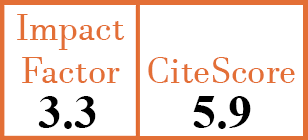Full Papers
Agreement in assessment of infliximab and adalimumab levels in rheumatoid arthritis: interlaboratory and interassay comparison
L. Valor1, D. Hernández-Flórez2, I. De La Torre3, F. Llinares4, J. Rosas5, J. Yagüe6, J. Garrido7, E. . Naredo8
- Department of Rheumatology, Hospital General Universitario Gregorio Marañón, Madrid, Spain.
- Department of Rheumatology, Hospital General Universitario Gregorio Marañón, Madrid, Spain.
- Department of Rheumatology, Hospital General Universitario Gregorio Marañón, Madrid, Spain.
- Laboratory Department, Hospital Marina Baixa, Villajoyosa, Alicante, Spain.
- Department of Rheumatology, Hospital Marina Baixa, Villajoyosa, Alicante, Spain.
- Department of Immunology, Hospital Clinic, Barcelona, Spain.
- Department of Social Psychology and Methodology, Autonoma University, Madrid, Spain.
- Department of Rheumatology, Hospital General Universitario Gregorio Marañón, Madrid, Spain.
CER7873
2015 Vol.33, N°5
PI 0617, PF 0623
Full Papers
Free to view
(click on article PDF icon to read the article)
PMID: 26316061 [PubMed]
Received: 29/08/2014
Accepted : 10/12/2014
In Press: 27/08/2015
Published: 02/10/2015
Abstract
OBJECTIVES:
Infliximab (IFX) and adalimumab (ADL) drug levels and anti-drug antibodies (ADA) are assessed using a variety of techniques, therefore, results cannot accurately be compared for clinical purposes. The aim of this study was to test two infliximab (IFX) and adalimumab (ADL) ELISA versions, for drug levels and ADA, to see whether they yield similar results.
METHODS:
ELISA versions [Promonitor® IFX R1 and R2 (V.1), Promonitor® IFX and Anti-IFX (V.2); Promonitor® ADL R1 and R2 (V.1), Promonitor® ADL and Anti-ADL (V.2) kits (Progenika Biopharma, Spain)] were used to measure drug levels and ADA in IFX (n=24) and ADL (n=24) rheumatoid arthritis-treated patients in three independent laboratories. Quantitative and qualitative agreements were evaluated using intraclass correlation coefficients (ICC), and Cohen’s Kappa (κ) respectively. The Bland-Altman plots assessed differences between V.1 and V.2.
RESULTS:
Interlaboratory agreement (ICC/κ) with V.1 was poor for IFX (0.66/0.62) and ADL (0.69/0.52) drug levels; meanwhile, high agreement was found with V.2 for IFX (0.98/0.95) and ADL (0.094/1.00). Comparison between V.1 and V.2 in each laboratory resulted in systematically higher values in V.2 than in V.1 and poor agreement (ICC/κ ranges) for IFX (0.12–0.7/ 0.19–0.42) and ADL (0.69–0.89 /0.50–0.73).
CONCLUSIONS:
Qualitative measurements result in better agreement, as evidenced in our study. Greater agreement in V.2 compared with V.1 for IFX and ADL levels could be due to a better tune up. Further studies are required to standardise methods to establish therapeutic reference ranges.


